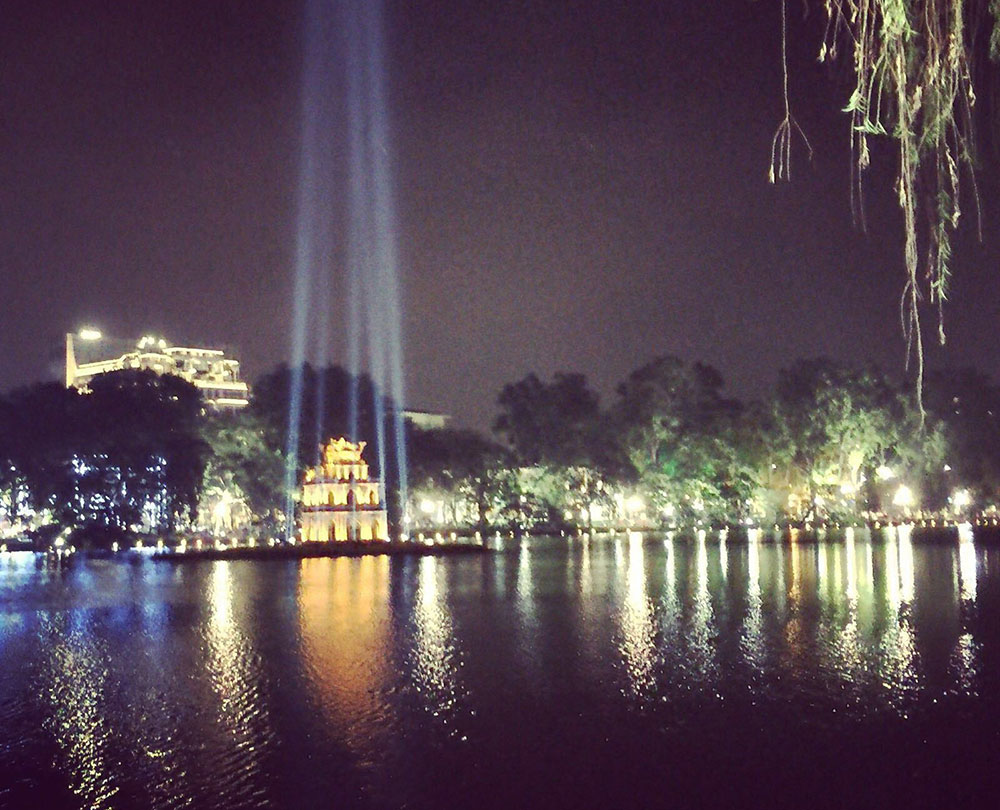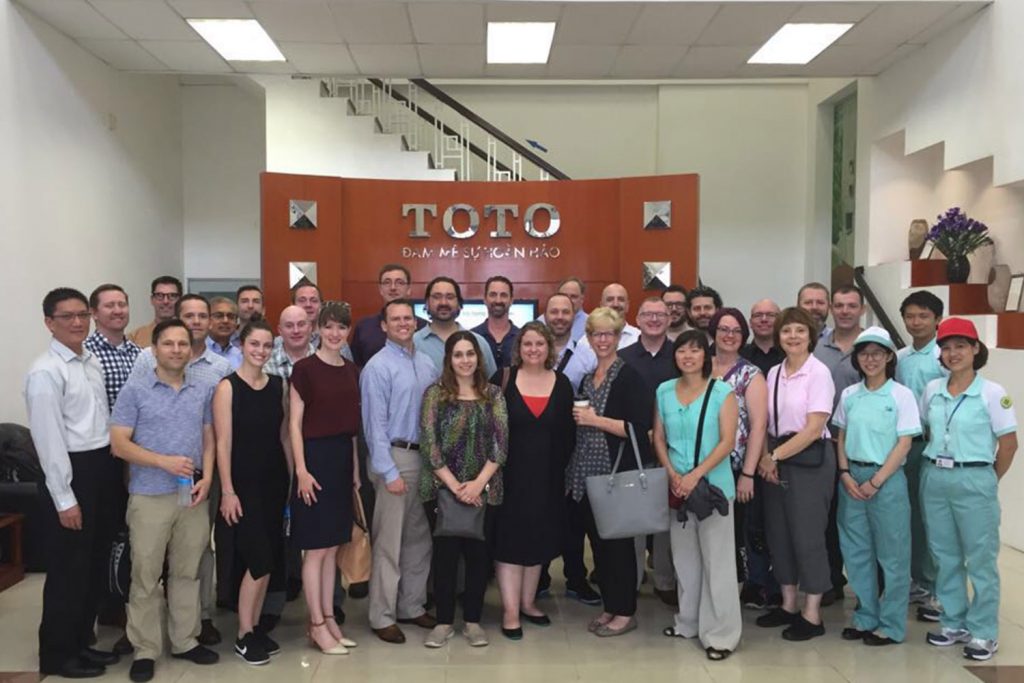EMBA international immersion in Viet Nam: Day 4 & 5

The last two tours of the trip, Blue Dragon Children’s Foundation and TOTO happened on Thursday and Friday respectively.
Blue Dragon Children’s Foundation is an Australian grassroots charity that reaches out to kids in crisis throughout Viet Nam. Blue Dragon kids are street kids, children from very poor families, and victims of human trafficking and slavery. This was the only nonprofit that we visited and, because their emphasis is kids, I suspected it would be a tear-jerker at best.
We knew going in that the kids would be present during the tour and as a cohort we brought with us donations that the organization has a hard time receiving due to taxes or just access. When we arrived, the kids had set up the room we would be using, and prepped all of the food and drink. We had a full spread of fresh fruit and fruit juices.
The building is a normal tall and thin Vietnamese style building. There were five floors–the first was a community room where the kids could hang out and have dance parties. The second floor had the kitchen, a small library, and few other private rooms. The third floor had a meeting room and few private rooms. The fourth floor was a gym that they were working on expanding and the roof top was a garden where the kids were learning to grow their own vegetables and take care of plants. They even built a bird box for some resident pigeons.
I was pleasantly surprised to see that the conversation was not sheltered because the kids were present. Yes, we were unsure of what we could and couldn’t (or should and shouldn’t) ask, but Blue Dragon was very open about the challenges they face, the issues the kids have, and the situations that are a reality. They shared stories about doing rescues and brining the kids back and how they go about getting them the help that they need. It’s not a set process because each kid’s needs are different. Some are able to return to their families while others will remain at Blue Dragon until they are an adult and move out.
The average age range that they deal with is between 6 and 21. I was surprised to hear that the average cost for a rescue is between $3-4,000. I actually thought it would be higher. And, unlike what we have heard at our other tours, the Viet Nam government is supportive of what they are doing and trying to assist in getting rid of the trafficking and slavery. They have even worked with the Chinese government for rescues.
Blue Dragon has been around long enough that some of the original kids that they have helped are even coming back to give back to the organization. Most of us bought some of the jewelry that the kids have made, the books about the organization, or even the cute dragons that they sell to help raise money. Unlike most nonprofits, Blue Dragon tries to stay under the radar to help protect the kids and ensure that their rescues are a success.

On the final day, we went to TOTO Viet Nam. TOTO is the world’s largest toilet manufacturer and the number one brand in Japan. TOTO toilets incorporate electronic, water-saving, and grime-resistant technologies. TOTO Viet Nam is separate from TOTO Japan, but the Japan influence, management, and manufacturing is still present.
Of all of the factory tours, this one was my favorite. I would be remiss if I didn’t admit that it might have had something to do with the fact that it wasn’t as hot in this factory as the others. The TOTO factory was also cleaner and attention to detail was very obvious.
TOTO Viet Nam has 3,000 employees. Six of them are Japanese and hold management positions. The main conference room is decorated with Strawberry Shortcake and Disney characters to make it friendly for the employees’ kids to visit. Their goal is to build a TOTO community and a sense of family among the employees and their families.
Matthew Freeborn is a part of the Regional program and has worked in manufacturing for over twenty years. Here are his take-a-ways from this tour:
While touring the TOTO plant in Hanoi, Vietnam, I was reminded what an efficient production line should look like. TOTO, a sanitary ware manufacturer and Japanese owned company, runs its manufacturing operation under the LEAN principles. Every manufacturing step I observed, from the robots applying the glazing compound, to the final fit checks, was designed to reduce waste and improve quality, including the robots applying the glazing compound. I’m always impressed with the ways companies continuously improve their systems of production. After 20+ years in manufacturing I’m always able to walk away from these tours with ideas to improve my own operations.
At the end of the week, it was interesting to look back. Each tour had something different to offer, a different experience, and an interesting perspective as to how politics affect businesses large and small, public and private. The organized chaos on the Viet Nam roads, the over-the-top attention-to-detail-driven customer service, and the ability to make you feel like an object with all of the constant pitching on the streets, Viet Nam was an unmatched, unlike any other, experience I have ever had.
I had someone ask me if ask me if, as a result of this trip, I was considering doing business in Viet Nam. Honestly, the thought never occurred to me. While I do see ways that I could contribute and I do love the time that I spent here, and we are already looking into visiting again, I am not sure that how I work or my personality would be a good fit for the culture. I won’t rule it out and I have made some great connections…so maybe, one day.
Guest post by Melanie DePaoli
Speaker | Brand Catalyst, Omicle LLC
Follow Melanie on Twitter: @MelDePaoli
